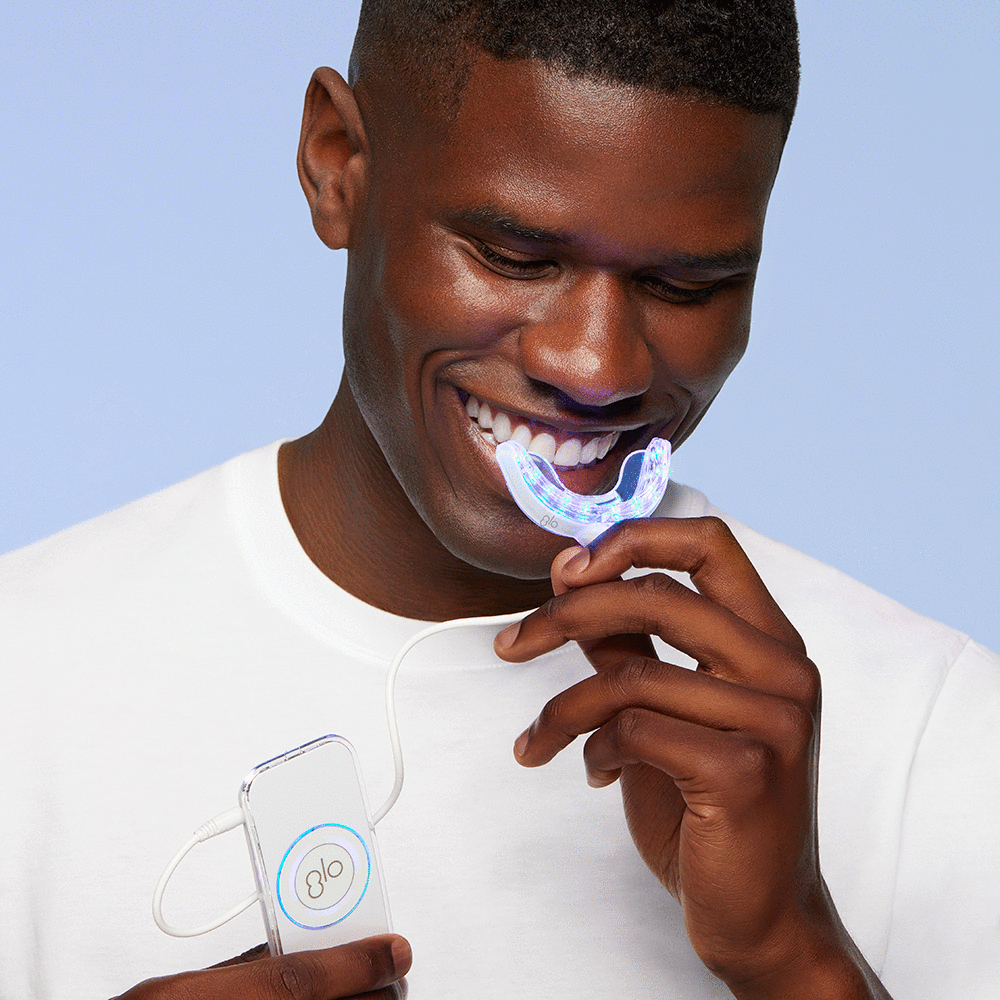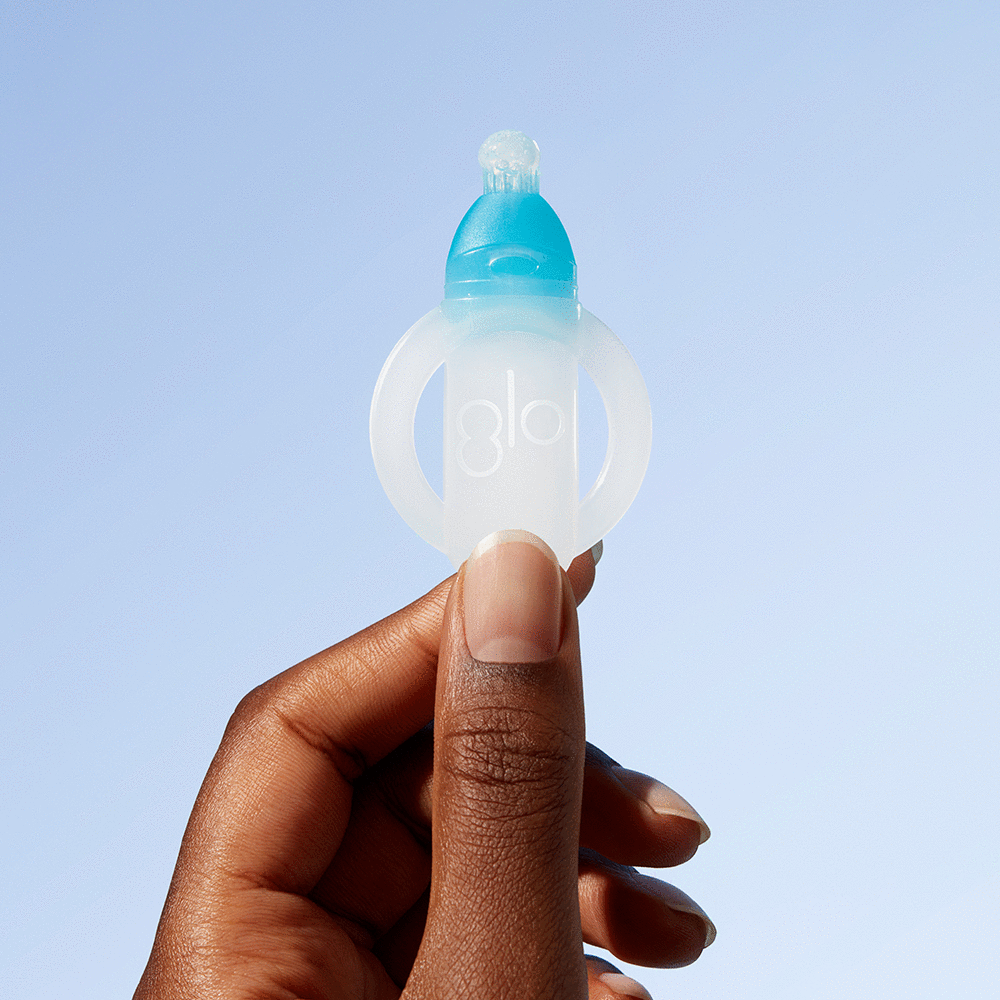A brighter, whiter smile helps to enhance your appearance and boost your confidence. Thankfully, a bright smile is relatively easy to achieve at home without much time or effort. Two super-common methods of at-home teeth whitening are whitening gels and whitening strips. Both boast brightened enamel, easy application, and quick results - but which whitening method is best? If you’re trying to decide if you should whiten with whitening strips or gel, keep reading!
What is Whitening Gel?
A whitening gel is a viscous fluid with an active whitening ingredient that erases stains and brightens enamel. Experts agree that hydrogen peroxide is the best whitening agent to achieve a brighter smile. Whitening gel with hydrogen peroxide can be applied in various formats: some come in a whitening pen, a gel vial you can squeeze to dispense onto a brush tip, or formulas that can be enhanced with a whitening device to amplify whitening results.
What are Whitening Strips?
Whitening strips are standard whitening tools found in many drugstores and online from many brands. Teeth whitening strips essentially act as a ‘tape’ applied to teeth. One side has a film of whitening gel that adheres to teeth. The strip helps the gel to stay secured to the tooth surface so that the whitening gel can penetrate the tooth’s surface to whiten.
Teeth Whitening Gel vs. Whitening Strips
1. Whitening Gel Takes Seconds to Apply
Whitening strips are often advertised as being quick to apply. However, they usually have to be used upwards of 30 minutes and applied several times to reap real benefits. Whitening gels, on the other hand, take just seconds to apply. In addition, clean dissolving gel breaks down cleanly and doesn’t require downtime while you whiten, making it faster to use than whitening strips.
2. Whitening Gels Don’t Cause Sensitivity
While popular, whitening strips can be detrimental to enamel and cause lingering pain and sensitivity. This is because the strips apply whitening agents to the tooth for an extended time and often reach the roots of the teeth and the gum line, not just the enamel. This means that hydrogen peroxide can bleach and cause pain to the gums.
On the other hand, a whitening gel is entirely customizable and can be applied to enamel only. Since you have complete control of where the gel is used, you can avoid the gumline, significantly reducing the chance of sensitivity. In addition to the application, the formula of your whitening gel makes a big difference. There are effective whitening gels formulated to be sensitivity-free and enamel safe for an optimal experience with zero pain!
3. Gel Allows You to Whiten On-the-Go
Whitening strips are compact, but they require a mirror to apply and inhibit eating, drinking, and talking. For this reason, they aren’t a great option for on-the-go. Whitening gels come in various formats that are travel friendly, from premeasured squeeze vials with a resealable cap to whitening pens that are perfectly sized for your purse or car. Just click, swipe, and smile - whitening gel is invisible on teeth and doesn’t require a mirror to apply.
4. Whitening Gel Lets You Whiten as Many Teeth as You Want
Have veneers, crowns, bridges, or uneven enamel shade? Whatever the reason is, you’ll want to create a custom whitening treatment for your teeth. With whitening strips, you have a pre-cut tape that isn’t customizable and will cover all of your teeth evenly - and therefore, whitens them all the same. If you’re hoping to create a custom whitening treatment, opt for a whitening gel that allows you to skip teeth or concentrate on those needing extra whitening.
5. Whitening Gel is Invisible
Strips show. Vials don’t. Any questions?
6. Gels Have Shorter Wear Time
Many whitening strips can be applied in a few minutes but must be worn for at least half an hour for several consecutive days to see results. On the other hand, gel whitens effectively in mere minutes and, when paired with a device, can whiten up to twelve shades in less than half an hour.
7. Whitening Gel Makes No Mess & No Trash
Many whitening gels feature an easy-squeeze design and a precision applicator brush tip for mess-free application. The gel is thick and dense, so it doesn’t drip or run and make a mess. With no cleanup necessary, you can whiten and touch up anywhere! Whitening strips can stick to fingers and create a lot of plastic waste. If you’re hoping to be more conscientious of your junk, look for whitening gels in recycled packaging.
8. Gel Hits Some Areas That Need Extra TLC
A whitening gel vial allows you to target problem areas like crevices and uneven spaces where stains often hide. That means coffee and tea drinkers can swiftly touch dark spots after drinking their favorite pumpkin spice latte. Likewise, if you notice yellowing closer to the tooth's base than at the tip, you can easily apply gel to just the bottom of the tooth to even out the shade and make your color consistent.
Strips are a one-size-fits-all solution, and there isn’t a way to customize them to tackle problem areas. So, if you have uneven enamel shade, it will lighten them all at the same rate. So they may brighten but will still be inconsistent.
9. You Can Talk While You Whiten with Gel
Your 8th-grade retainer is a thing of the past - thankfully! - but you might experience a blast from the past when you apply whitening strips. These strips stick to your teeth and create a barrier between your tongue and teeth, creating a cumbersome lisp and inhibiting your speech. On the other hand, whitening gel only utilizes a chemical whitening element. It doesn’t make a barrier between the teeth, so you can talk to your heart's content, even while you whiten!
10. Whitening Gels Don’t Require Rinsing
Whitening strips can leave a sticky residue or film that only dissolves with several rinses. With GLO Science Whitening gel, you don’t need to stress about being able to rinse (or even spit!) because the hydrogen peroxide gel breaks down clearly without any sticky film or gross after taste.




